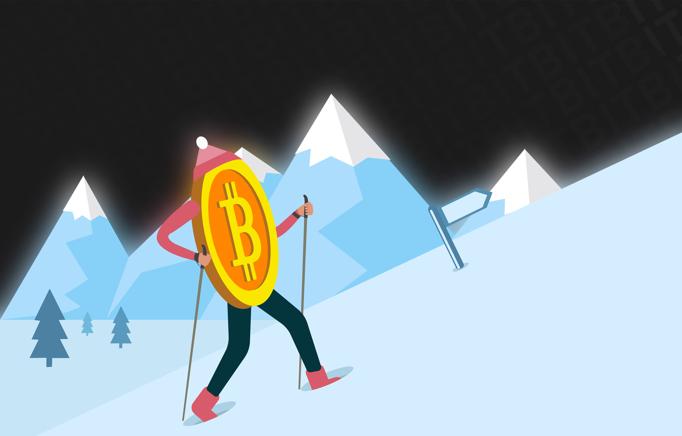What is crypto winter
Crypto for Beginners
Other articles
Crypto winter, which is commonly connected with the bitcoin market decline between late 2017 and late 2018, refers to a lengthy negative phase in which asset values decrease steadily over many months. It is used mainly when there is predicted long-term bearish market.
Fears of a repetition are being raised after the world's largest cryptocurrency dropped 50 percent from its most recent high of about $69,000 in November. The crypto world has lost more than $1 trillion in market value as investors become increasingly convinced that the Federal Reserve will begin to withdraw the ultra-accommodative policy settings that fostered the risk asset bubble. The sell-off has affected the whole crypto ecosystem, from Bitcoin to meme coins and publicly traded crypto exchanges. While the fall was unsettling enough on its own, it has sparked even more fear that the pain might last for months.
For example, in June 2021, the prices of five popular cryptocurrencies fell in less than a week. As a result, several traders began to predict about a crypto winter in 2021. Prior to the wild collapse, Bitcoin had the greatest market valuation at 611 billion USD. However, Bitcoin's price fell by almost 7.5 percent in just a week. Ethereum came in second, losing 14.5 percent within the same time period.
There is a growing view that the cryptocurrency market (in recent years) follows a four-year cycle of increasing and declining prices. It is difficult to determine whether this is the consequence of a self-fulfilling prophesy; nonetheless, many attribute this hypothesis to the timing of Bitcoin halving occurrences, which occur about every four years (more specifically, every 210,000 blocks). According to the tale, this alters the market dynamic and ushers in a new market cycle.
The quantity of freshly minted bitcoins paid to successful miners as block rewards is decreased in half at each Bitcoin halving event - in the most recent halving event in 2020, the block reward was lowered by half, from 12.5 to 6.25. What's most remarkable about these occurrences is the recurring influence they appear to have on the crypto market about one year after each halving.
Bitcoin – and most other cryptocurrencies in the market — recorded new all-time highs a year after the 2016 halving, when bitcoin block rewards were reduced from 25 to 12.5 BTC. Bitcoin and the larger crypto market reached fresh all-time highs in 2021, one year after the next successive halving.
Because of the four-year gap between these two peaks, some investors are naturally concerned that the similar gap will exist for crypto winters. And, given 2018 was the last winter, a second is expected in 2022 — if cycles continue to follow the same four-year pattern.


